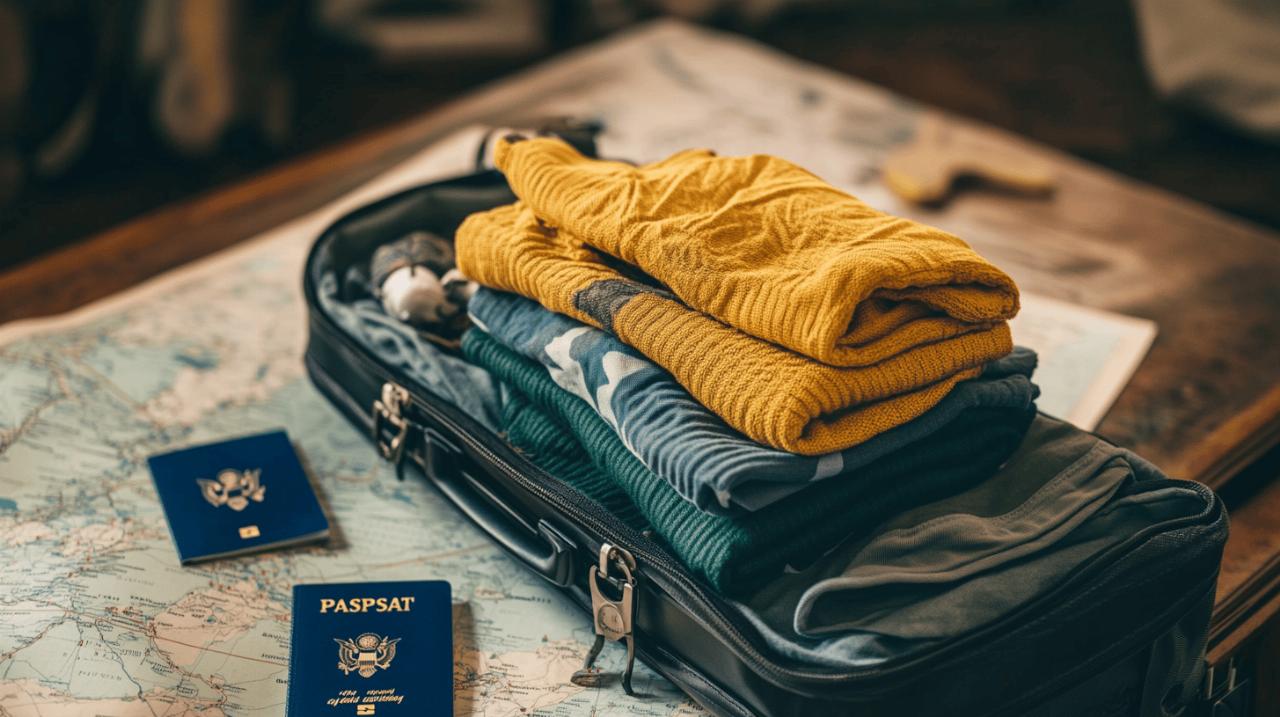Packing for travel often creates unnecessary anxiety, yet mastering a few strategic techniques can transform this dreaded task into a smooth process. By focusing on organization and space optimization, you'll enjoy your journey without the burden of overstuffed luggage or forgotten essentials.
Smart packing strategies to maximize space
Creating an efficient packing system begins with preparation and thoughtful organization. Starting a week before departure allows time to plan outfits completely rather than packing individual pieces that might not coordinate. Making a digital packing list ensures nothing gets left behind while helping maintain consistency across trips.
Rolling vs. Folding Techniques for Different Clothing Types
Different garments benefit from specific packing methods. Rolling works exceptionally well for t-shirts, casual pants, and knit fabrics, reducing wrinkles while maximizing space utilization. Structured items like button-down shirts and blazers typically fare better when folded using tissue paper between layers to minimize creasing. Jeans and heavier materials can be rolled tightly from the waistband down. Many travelers who use the PreparaTuViaje approach find that rolling lighter items and folding formal wear creates the optimal balance between space efficiency and garment care.
Using packing cubes and compression bags effectively
Packing cubes transform suitcase chaos into organized sections while compression bags maximize limited space. For best results, group similar items together—one cube for tops, another for bottoms, and a smaller one for undergarments. Color-coding cubes streamlines the unpacking process at your destination. Compression bags work wonders for bulky items like jackets and sweaters, though they're less ideal for wrinkle-prone fabrics. Some experienced travelers even organize cubes by outfit or day rather than clothing type, making morning routines at their destination remarkably simple.
Creating the perfect travel packing list
Efficient packing is a game-changer for reducing travel anxiety and ensuring a smooth journey. A well-organized packing strategy not only saves space but transforms your entire travel experience. The key to stress-free travel begins with a thoughtful approach to what goes in your luggage.
Creating a digital packing list on platforms like Google Drive allows you to reuse and modify it for future trips. Start packing approximately a week before departure, giving yourself ample time to gather everything you need without last-minute rushes. This methodical approach significantly reduces travel stress and helps ensure nothing essential is forgotten.
Essential items you should never leave behind
Every traveler needs certain non-negotiable items regardless of destination. Pack your valuables, medications, travel documents, basic toiletries, and at least one outfit change in your carry-on luggage. This practice serves as insurance against lost checked baggage and helps distribute weight between your bags.
Space-saving techniques can maximize your luggage capacity. Roll clothes instead of folding them to minimize creasing and save space. Utilize packing cubes to organize different clothing categories or complete outfits, making unpacking at your destination much simpler. A portable luggage scale (available for around $10) can prevent costly overweight baggage fees at the airport.
Protect delicate items by storing them inside shoes with socks for cushioning. For beach hats, stuff the crown with socks and place them flat at the bottom or top of your suitcase. Using proper toiletry bags rather than disposable plastic bags not only protects your belongings better but is also more environmentally friendly. Small mesh bags can organize jewelry, sunscreen, and other loose items.
Customizing Your Packing List Based on Destination and Trip Duration
Tailoring your packing list to your specific destination and trip length is crucial for efficient travel. Rather than packing individual clothing pieces, plan complete outfits including shoes and accessories. This approach reduces overpacking and ensures you'll have appropriate attire for all planned activities.
Climate considerations should guide your clothing choices. Research typical weather patterns for your destination during your travel dates. For warmer climates, lightweight, breathable fabrics are ideal, while layering options work best for variable or cooler weather. Multi-purpose items that can be dressed up or down maximize versatility while minimizing luggage space.
Trip duration affects quantity more than variety. For longer stays, consider accommodation laundry facilities or local laundry services rather than packing for every day. Pack garments that can be mixed and matched to create different looks. Adding a drawer sachet to your suitcase keeps clothes smelling fresh throughout your journey and can deter moths. After returning home, washing your clothes promptly removes harsh chemicals they may have been exposed to during travel.

